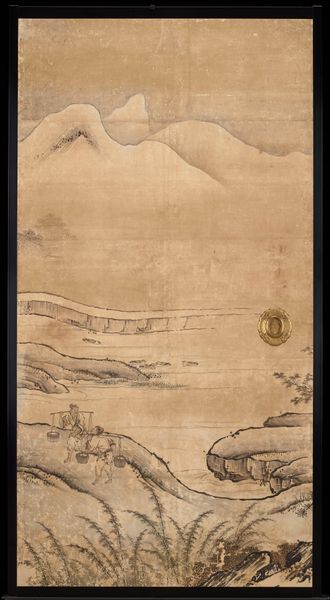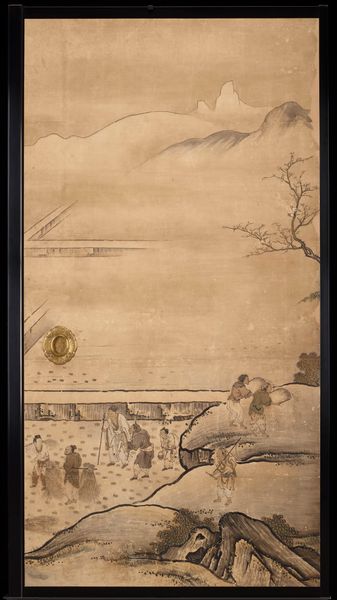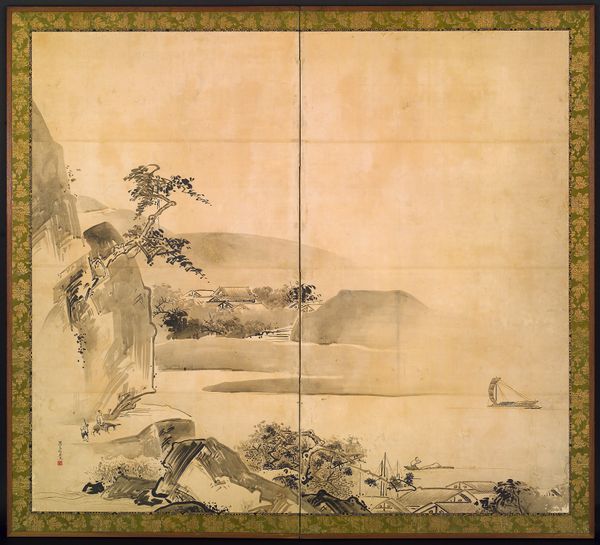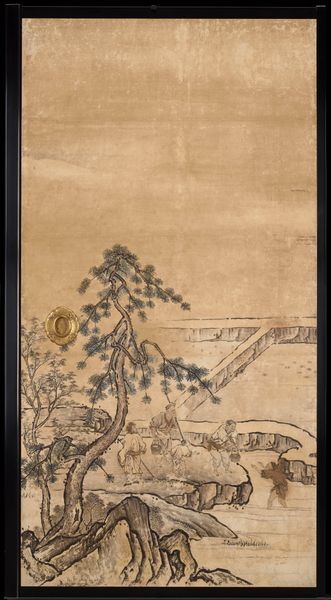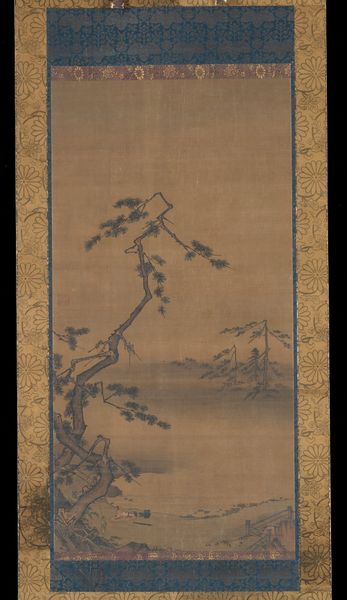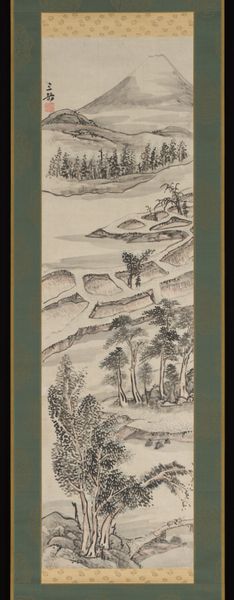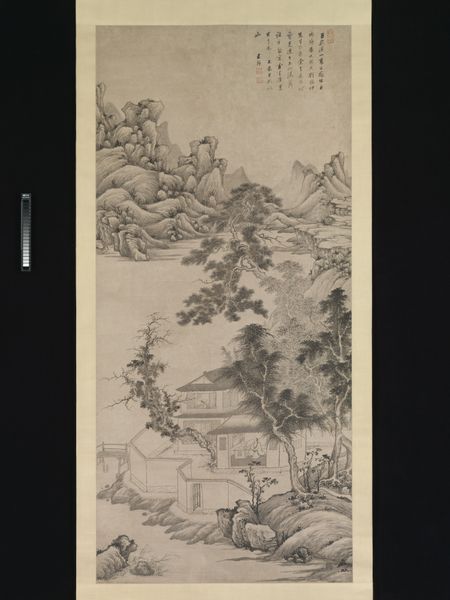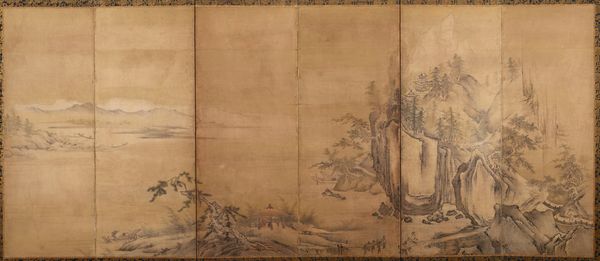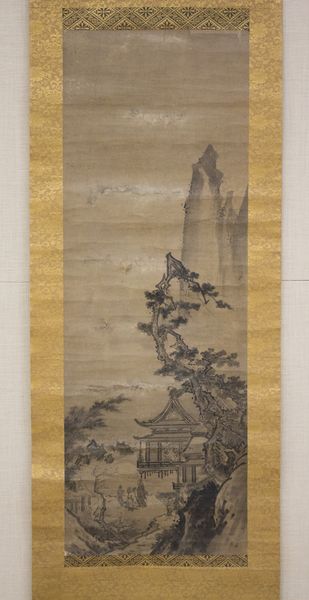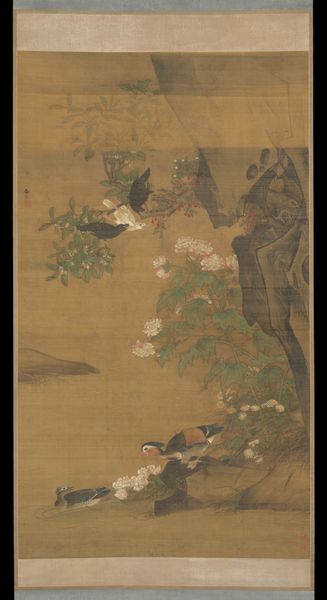![Fall [left from the set Rice Farming in the Four Seasons] by Kano Sanraku](/_next/image?url=https%3A%2F%2Fd2w8kbdekdi1gv.cloudfront.net%2FeyJidWNrZXQiOiAiYXJ0ZXJhLWltYWdlcy1idWNrZXQiLCAia2V5IjogImFydHdvcmtzLzU0MDNmOGUyLWQ0M2MtNGZhYi1iYzQwLWJlOTcyOGZiZWRjMC81NDAzZjhlMi1kNDNjLTRmYWItYmM0MC1iZTk3MjhmYmVkYzBfZnVsbC5qcGciLCAiZWRpdHMiOiB7InJlc2l6ZSI6IHsid2lkdGgiOiAxOTIwLCAiaGVpZ2h0IjogMTkyMCwgImZpdCI6ICJpbnNpZGUifX19&w=3840&q=75)
Fall [left from the set Rice Farming in the Four Seasons] c. 1620s
0:00
0:00
painting, ink
#
ink painting
#
painting
#
asian-art
#
landscape
#
figuration
#
ink
Dimensions: 76 x 39 1/4 x 4 in. (193.04 x 99.7 x 10.16 cm)
Copyright: Public Domain
Curator: Ah, here we have "Fall" from the set "Rice Farming in the Four Seasons," an ink painting dating back to the 1620s, attributed to Kano Sanraku. It's currently housed here at the Minneapolis Institute of Art. Editor: There’s a melancholic air about this piece, wouldn't you agree? That vast emptiness in the upper register really sets a somber mood. The limited palette only amplifies it. Curator: The subdued tonality does lend it a certain gravity. The composition is masterfully balanced. The weeping willow and gnarled pine in the foreground, contrasted against the distant rice paddies...it's all carefully calibrated to draw the eye. Editor: That bridge cutting across the middle feels strangely unnatural though, doesn't it? Almost aggressively geometric amidst the organic forms of nature. It’s as if civilization is intruding. Curator: Indeed. That very tension is central to its meaning. Kano Sanraku, as a prominent member of the Kano school, was adept at synthesizing Chinese landscape traditions with distinctly Japanese sensibilities. The bridge might signify man's intervention in, or perhaps connection to, the natural world. Editor: Or the vulnerability of our constructed environment? You know, despite the stillness, I can almost hear the quiet whisper of wind and the gentle rustle of leaves. It’s more alive than it first seems. Curator: The meticulous brushwork in the rendering of the foliage certainly contributes to that sense of vitality. The variations in the ink washes create depth and texture that invite closer inspection. Editor: And look at those cranes. So minimal, almost spectral. They pull the eye upwards and break the somber tone. They speak of journeys and passage, hope on the horizon. Curator: A poignant counterpoint to the image's overall subdued atmosphere. A subtle reminder that even in decline, life persists. Editor: It really is a painting that reveals its subtleties over time, isn't it? What appears to be a simple landscape unveils complex layers of meaning the longer we linger with it. Curator: Precisely. It's a testament to Sanraku's profound understanding of form and symbolism.
Comments
minneapolisinstituteofart almost 2 years ago
⋮
These sliding screens originally formed the four walls of a small reception chamber in Daikakuji, a temple in northwest Kyoto that alternately served as the palace for Japan's emperor. Representing the various activities associated with rice cultivation, the screens form a continuous agricultural panorama from wall to wall. Some of these chores include plowing, transplanting the rice, irrigating, threshing and grinding. Typical of paintings by artists of the Kano school, the theme derives from China and is didactic in nature. Agriculture, according to Chinese Confucian teachings, is the basis of a well-ordered society. Accordingly, when Japanese rulers adopted Confucianism as their ruling ideology, they also commissioned paintings which reflected social stability, morality and government values.Although unsigned, it is likely that these paintings are by Kano Sanraku who was commissioned to decorate the temple where these screens once existed. As head of the Kano school in the early 17th century, Sanraku evolved a style characterized by greater naturalism and detail than previous Kano artists. In addition to these characteristics, these screens exhibit a clear compositional arrangement, crisp brushwork, and heavily outlined rock formations--all hallmarks of the Kano style.
Join the conversation
Join millions of artists and users on Artera today and experience the ultimate creative platform.
